Potrebujeme váš súhlas na využitie jednotlivých dát, aby sa vám okrem iného mohli ukazovať informácie týkajúce sa vašich záujmov. Súhlas udelíte kliknutím na tlačidlo „OK“.
ASTM D6527-00(2008)
Standard Test Method for Determining Unsaturated and Saturated Hydraulic Conductivity in Porous Media by Steady-State Centrifugation (Withdrawn 2017)
Automaticky preložený názov:
Štandardná skúšobná metóda pre stanovenie nenasýtené a nasýtené hydraulické vodivosti v poréznych o rovnovážnom stave odstredenia
NORMA vydaná dňa 15.9.2008
Informácie o norme:
Označenie normy: ASTM D6527-00(2008)
Poznámka: NEPLATNÁ
Dátum vydania normy: 15.9.2008
Kód tovaru: NS-35497
Počet strán: 10
Približná hmotnosť: 30 g (0.07 libier)
Krajina: Americká technická norma
Kategória: Technické normy ASTM
Kategórie - podobné normy:
Anotácia textu normy ASTM D6527-00(2008) :
Keywords:
centrifugation, flow, hydraulic conductivity, permeability, porosity, porous media, rock, SSC-UFA, soil, steady-state, transport, unsaturated, unsaturated flow apparatus, water flux density: Water flux density, Centrifugation, Ceramic materials/applications, Concrete, Hydraulic conductivity/transmissivity, Porous media/materials, Rock materials/properties/analysis, Saturated hydraulic conductivity, Sediment, Soil, Steady-state centrifugation (SSC), Subsurface investigation--soil/rock
Doplňujúce informácie
| Significance and Use | ||||||||||||||||
|
Recent results have demonstrated that direct measurements of unsaturated transport parameters, for example, hydraulic conductivity, vapor diffusivity, retardation factors, thermal and electrical conductivities, and water potential, on subsurface materials and engineered systems are essential for defensible site characterization needs of performance assessment as well as restoration or disposal strategies. Predictive models require the transport properties of real systems that can be difficult to obtain over reasonable time periods using traditional methods. Using a SSC-UFA greatly decreases the time required to obtain direct measurements of hydraulic conductivity on unsaturated systems and relatively impermeable materials. Traditionally, long times are required to attain steady-state conditions and distributions of water because normal gravity does not provide a large enough driving force relative to the low conductivities that characterize highly unsaturated conditions or highly impermeable saturated systems (Test Method D5084). Pressure techniques sometimes can not be effective for measuring unsaturated transport properties because they do not provide a body force and cannot act on the entire specimen simultaneously unless the specimen is saturated or near-saturated. A body force is a force that acts on every point within the system independently of other forces or properties of the system. High pressures used on saturated systems often induce fracturing or grain rearrangements and cause compaction as a result of high-point stresses that are generated within the specimen. A SSC-UFA does not produce such high-point stresses. There are specific advantages to using centrifugal force as a fluid driving force. It is a body force similar to gravity and, therefore, acts simultaneously over the entire system and independently of other driving forces, for example, gravity or matric potential. Additionally, in a SSC-UFA the acceleration can dominate any matric potential gradients as the Darcy driving force. The use of steady-state centrifugation to measure steady-state hydraulic conductivities has recently been demonstrated on various porous media (1,2). Several issues involving flow in an acceleration field have been raised and addressed by previous and current research (1,4). These studies have shown that compaction from acceleration is negligible for subsurface soils at or near their field densities. Bulk densities in these specimens have remained constant (±0.1 g/cm3) because the specimens are already compacted more than the acceleration can affect them. The notable exception is structured soils. Special arrangements must be made to preserve their densities, for example, the use of speeds not exceeding specific equivalent stresses. As an example, for most SSC-UFA specimen geometries, the equivalent pressure in the specimen at a rotation speed of 2500 rpm is about 2 bar. If the specimen significantly compacts under this pressure, a lower speed must be used. Usually, only very fine soils at dry bulk densities less than 1.2 g/cm3 are a problem. Whole rock, grout, ceramics, or other solids are completely unaffected by these accelerations. Precompaction runs up to the highest speed for that run are performed in the SSC-UFA prior to the run to observe any compaction effects. Three-dimensional deviations of the driving force as a function of position in the specimen are less than a factor of two. Theoretically, the situation under which unit gradient conditions are achieved in a SSC-UFA, in which the change in the matric potential with radial distance equals zero (dψ/dr = 0), is best at higher water flux densities, higher speeds, or coarser grain-size, or combination thereof. This is observed in potential gradient measurements in the normal operational range where dψ/dr = 0. The worst case occurs at the lowest water flux densities in the finest-grained materials (1). There is no sidewall leakage problem in the SSC-UFA for soils. The centrifugal force maintains a good seal between the specimen and the wall. As the specimen desaturates, the increasing matric potential (which still operates in all directions although there is no potential gradient) keeps the water within the specimen, and the acceleration (not being a pressure) does not force water into any larger pore spaces such as along a wall. Therefore, capillary phenomena still hold in the SSC-UFA, a fact which is especially important for fractured or heterogeneous media (2). Cores of solid material such as rock or concrete, are cast in epoxy sleeves as their specimen holder, and this also prevents sidewall leakage. The SSC-UFA can be used in conjunction with other methods that require precise fixing of the water content of a porous material. The SSC-UFA is used to achieve the steady-state water content in the specimen and other test methods are applied to investigate particular problems as a function of water content. This has been successful in determining diffusion coefficients, vapor diffusivity, electrical conductivity, monitoring the breakthrough of chemical species (retardation factor), pore water extraction, solids characterization, and other physical or chemical properties as functions of the water content (2,5). Hydraulic conductivity can be very sensitive to the solution chemistry, especially when specimens contain expandable, or swelling, clay minerals. Water should be used that is appropriate to the situation, for example, groundwater from the site from which the specimen was obtained, or rainwater if an experiment is being performed to investigate infiltration of precipitation into a disposal site. Appropriate antimicrobial agents should be used to prevent microbial effects within the specimen, for example, clogging, but should be chosen with consideration of any important chemical issues in the system. A standard synthetic pore water solution, similar to the solution expected in the field, is useful when it is difficult to obtain field water. Distilled or deionized water is generally not useful unless the results are to be compared to other tests using similar water or is specified in pertinent test plans, ASTM test methods, or EPA procedures. Distilled water can dramatically affect the conductivity of soil and rock specimens that contain clay minerals, and can induce dissolution/precipitation within the specimen. This test method establishes a dynamic system, and, as such, the steady-state water content is usually higher than that which is attained during a pressure plate or other equilibrium method that does not have flow into the specimen during operation. This is critical when using either type of data for modeling purposes. This test method does not measure water vapor transport or molecular diffusion of water, both of which become very significant at low conductivities, and may actually dominate when hydraulic conductivities drop much below 10–10 cm/s. The quality of the result produced by this test method depends upon the competence of the personnel performing it, and the suitability of the equipment and facilities used. Agencies that meet the criteria of Practice D3740 are generally considered capable of competent and objective testing and sampling. Users of this test method are cautioned that compliance with Practice D3740 does not in itself ensure reliable results. Reliable results depend on many factors; Practice D3740 provides a means of evaluating some of those factors. |
||||||||||||||||
| 1. Scope | ||||||||||||||||
|
1.1 This test method covers the determination of the hydraulic conductivity, or the permeability relative to water, of any porous medium in the laboratory, in particular, the hydraulic conductivity for water in subsurface materials, for example, soil, sediment, rock, concrete, and ceramic, either natural or artificial, especially in relatively impermeable materials or materials under highly unsaturated conditions. This test method covers determination of these properties using any form of steady-state centrifugation (SSC) in which fluid can be applied to a specimen with a constant flux or steady flow during centrifugation of the specimen. This test method only measures advective flow on core specimens in the laboratory. 1.2 The values stated in SI units are to be regarded as standard. No other units of measurement are included in this standard. 1.3 This standard may involve hazardous materials, operations, and equipment. This standard does not purport to address all of the safety concerns, if any, associated with its use. It is the responsibility of the user of this standard to establish appropriate safety and health practices and determine the applicability of regulatory limitations prior to use. |
||||||||||||||||
| 2. Referenced Documents | ||||||||||||||||
|
Podobné normy:
Historická
1.10.2011
Historická
15.9.2008
Historická
15.9.2008
Historická
1.10.2011
Historická
1.7.2008
Historická
15.11.2013


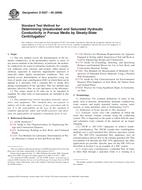
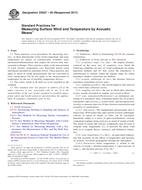 ASTM D5527-00(2011)..
ASTM D5527-00(2011)..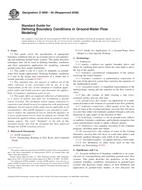 ASTM D5609-94(2008)..
ASTM D5609-94(2008)..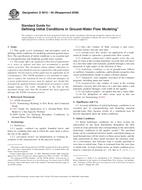 ASTM D5610-94(2008)..
ASTM D5610-94(2008)..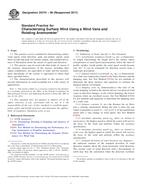 ASTM D5741-96(2011)..
ASTM D5741-96(2011)..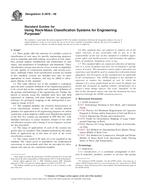 ASTM D5878-08
ASTM D5878-08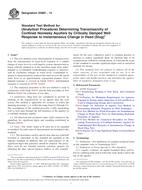 ASTM D5881-13
ASTM D5881-13
 Cookies
Cookies
